-
Review of historical work
Following technical due diligence, the Company moved swiftly to commence a detailed review of historical work, secure land access and undertake exploration activities at the targeted area, Bell Valley.
The Bell Valley target contains the eastern half of the Copper Hill Igneous Complex (CHIC), which locally hosts the Copper Hill deposit with a total resource of 87Mt @ 0.32g/t Au & 0.36% Cu comprising indicated resources of 47Mt @ 0.39g/t Au & 0.4% Cu and inferred resources of 40Mt @ 0.24g/t Au & 0.32% Cu, using a 0.2% copper cut-off grade.
At its closet point to Belgravia, the Copper Hill deposit is only 1.5km away. It is also noted that the Copper Hill deposit is sparsely drilled below 350 metres vertically and there is good potential for depth extensions.
The Bell Valley target also contains a second substantial system prospective for porphyry mineralisation, the Larras Lake Igneous Complex (LLIC) – see figure 2.
A review of previous work done by Mount Isa Mines (MIM) and Newcrest at the LLIC, highlighted the highly prospective nature of the target area.

Figure 2: Location of the CHIC and LLIC in relation to the Belgravia Project
-
MIM
Historical drilling results from MIM’s 233 vertical hole Rotary Air Blast (RAB) program completed at the LLIC in 1995 were digitised. The drilling comprised mostly shallow (averaging 8m or less) holes sampled in 3-metre composites, with a maximum depth of 33m. The holes terminated at blade refusal.
Importantly, it was noted that the deepest holes are coincident with higher copper and gold results, and are supportive of an alteration trough being associated with the mineralizing event. The max value geochemistry for copper and gold also supported a strong Southeasterly trend towards Belgravia (figure 3).

Figure 3: Gold (left) and copper (right) geochemistry from the historical Larras Lake anomaly identified by MIM geochemistry

-
NCM
In 1997 Newcrest Mining Limited drilled 4 Reverse Circulation (RC) holes to test earlier MIM RAB anomalies (defined as 200ppb Au and >300ppm Cu). The 4 inclined holes (-55°) each of a 200m length and sampled in one-metre increments, lie approximately 400 metres west of the Belgravia Project.
The limited historical drilling program by Newcrest supports the LLIC as being gold mineralised, with better results including:
-
30m @ 0.20 g/t Au from 163m (Hole: LLR004)
Inc 1m @ 1.15 g/t Au and 0.28% Cu from 185m
-
3m @ 1.02 g/t Au and 0.10% Cu from 56m (Hole: LLR004)
Inc 1m @ 2.28 g/t Au and 0.21% Cu from 56m
-
6m @ 0.26 g/t Au from 105m (Hole: LLR004)
-
6m @ 0.18g/t Au from 84m (Hole: LLR003)
The review of drilling logs also identified the following:
-
Numerous thin intersections of anomalous gold ± copper mineralisation are associated with quartz ± carbonated veins within volcanics and dioritic intrusives.
-
Hematite alteration or “dusting” is associated with the higher grade and broader intervals of anomalous gold (>100ppb) delineated in the RC drilling. Generally, hematite dusting is restricted to the propylitic alteration zone related to porphyry Cu-Au deposits hosted by high-K calc-alkaline or shoshonitic intrusions with high oxidation states (e.g. Cadia).
-
Pervasive sericite alteration which becomes more abundant in the lower parts of hole LLR004. Importantly, the alteration minerals and assemblages, and how they vary with mineralisation, offer important vectors towards mineralisation. Thus, in the example of Larras Lake, the alteration type and frequency of mineralised intersections increase in width and tenor at depth and towards the southeast suggesting the drilling was neither deep enough nor of sufficient density to outline a more substantial source, which may lie towards or in the Belgravia Project.
Newcrest reported that the tenor and alteration were similar to other recent discoveries in the Lachlan Fold Belt (without naming them), and recommended retaining the ground even with the prevailing low gold price. Newcrest exited the Joint Venture in 1999.
It is worth considering that Cadia was discovered only when drilling was conducted in a manner suited to the discovery and delineation of an extensive mineral system, with core holes typically 300-600m in length on 200m step-outs.
-
Conclusion
Consistent with the Company’s ASX announcement on 3 December 2019, Krakatoa believes that the metal tenor and distribution, and that of the alteration minerals support MIM (and as discussed previously, Newcrest) as potentially drilling the periphery of a larger mineralised system that lies at depth and in a direction consistent with the Company’s Belgravia Project.


